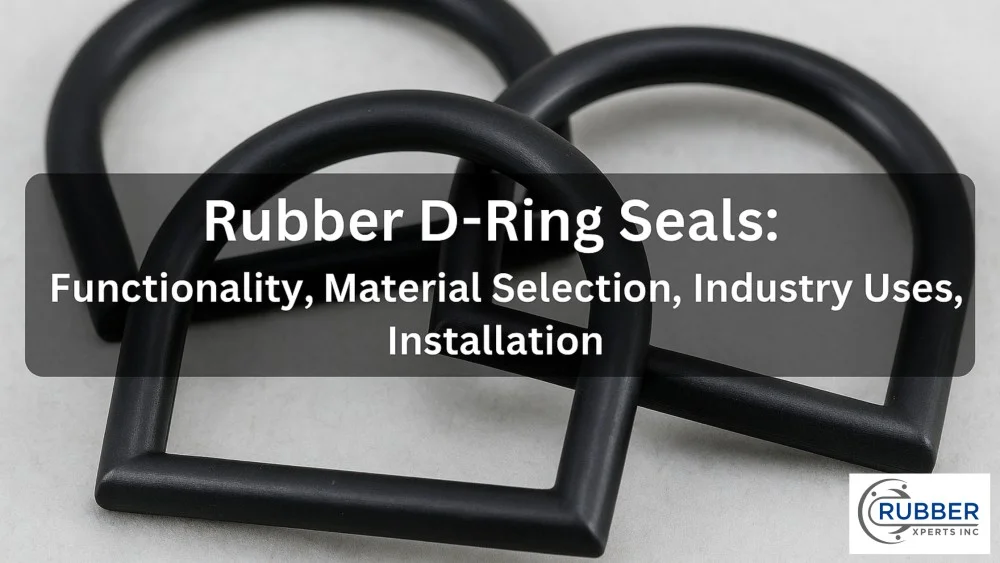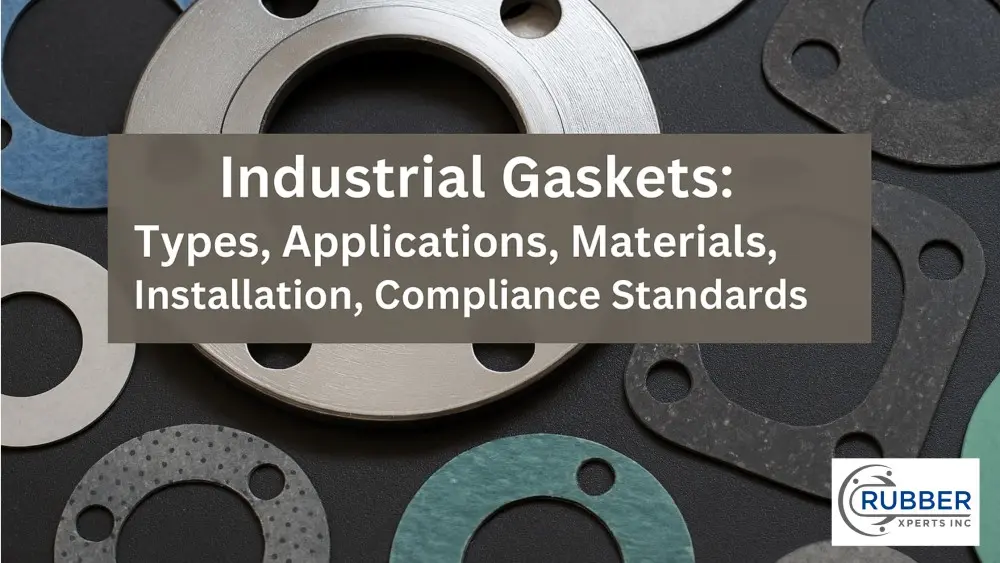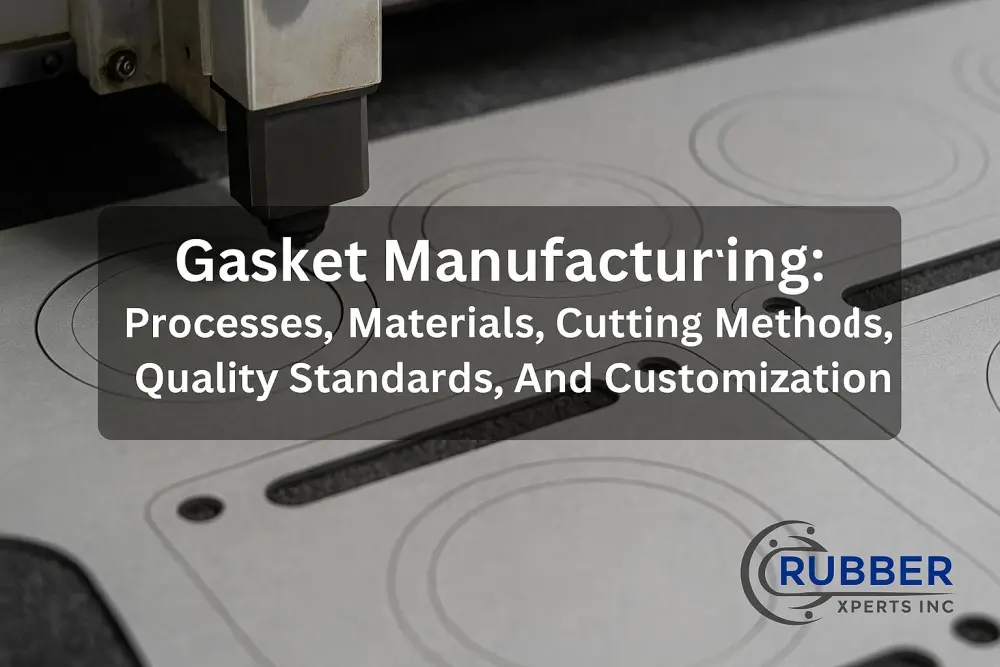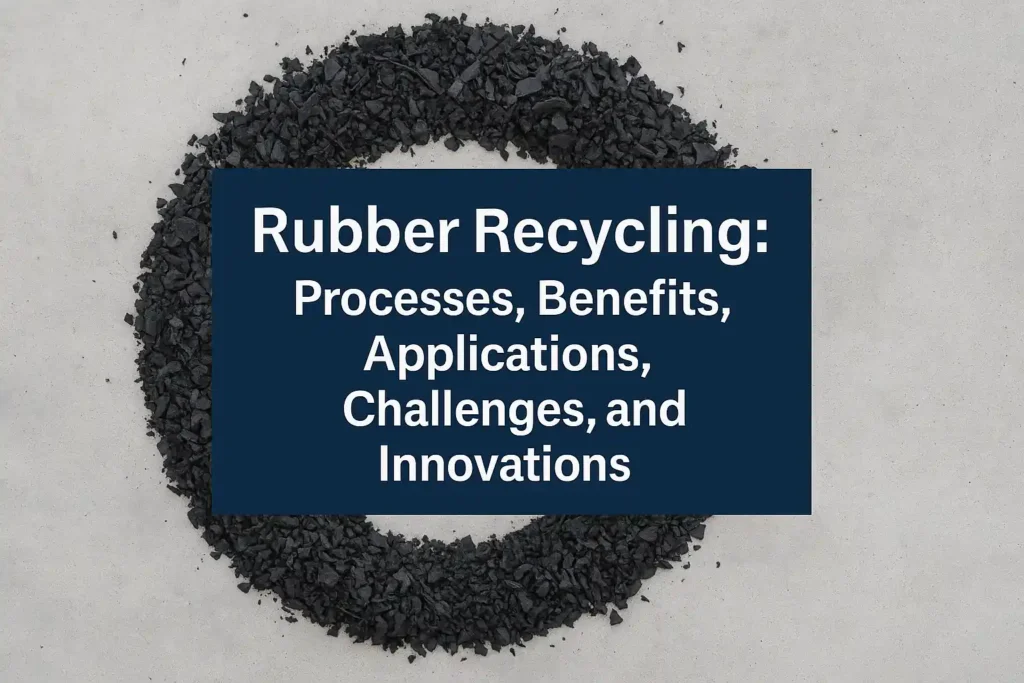High-temperature gaskets function as temperature-resistant to prevent leaks, resist degradation, and ensure sealing performance under extreme heat applications. Hence, they contribute to the overall safety and reliability of industrial systems, such as turbines, engines, and furnaces.
Features of high-temperature gaskets include resistance, mechanical strength, flexibility, durability, and compliance with industry standards. Materials retain elasticity and structure across heat exposure and mechanical stress.
The selection criteria for high-temperature gaskets include application mode, gasket joint pressure, chemical compatibility, temperature, and material certification and standards. Correct matching ensures that durable gasket materials function in long-term service.
The applications of high temperature gaskets include automotive, aerospace, oil and gas, power generation, and industrial furnaces and ovens. They enable heat-resistant sealing, thermal expansion compensation, and fluid containment under extreme conditions.
What is a High Temperature Gasket?
High Temperature Gasket is a thermal resistant seal designed to maintain effective sealing under extreme temperature conditions. It prevents leakage of gases or fluids where exposure exceeds 200°C. This function makes it vital in environments requiring continuous high heat containment.
A high-heat gasket is defined as one that retains form and sealing capacity despite intense thermal cycling. This includes resistance to heat, pressure, and chemically reactive substances.
The meaning of a heat-resistant gasket centers on stable performance in engines, boilers, furnaces, and turbines. The purpose of an industrial gasket focuses on operational safety, leak prevention, and insulation in mechanical systems.
Extreme-temperature sealing demands specific gasket materials that endure both high and fluctuating temperatures. This section introduces further discussion on material types, application modes, sealing features, and industrial uses.
What are the Common Materials of High Temperature Gaskets?
The common materials for high temperature gaskets are silicone rubber, nitrile rubber, neoprene, and EPDM. These materials support thermal insulation gasket performance in harsh environments such as engines, furnaces, and process equipment.
The common materials for high-temperature gaskets are explained below:
Silicone Rubber
Silicone Rubber is a synthetic elastomer engineered for high-temperature gasket applications exceeding 250°C. It maintains elasticity, compression set resistance, and surface stability in continuous thermal exposure.
Its specialty lies in long-term flexibility, resistance to thermal aging, and inert behavior in contact with oils and chemicals. It is a preferred base for thermal insulation gaskets used in fluctuating heat zones.
Common products made from silicone rubber include oven door gaskets, automotive engine seals, aerospace couplings, and electrical cabinet insulation gaskets. It is frequently used alongside graphite gaskets and metal reinforced gaskets in hybrid applications for dual thermal and mechanical endurance.
Nitrile Rubber
Nitrile Rubber is a synthetic copolymer of acrylonitrile and butadiene used in high-pressure sealing and heat-resistant gasket applications. It performs reliably in temperatures between -40°C and 120°C and offers strong resistance to oils and hydrocarbons.
Its specialty is chemical compatibility. Nitrile maintains compression stability and mechanical strength when exposed to fuel mixtures and lubricants, making it suitable for industrial sealing systems where oil resistance is a priority.
Common products made from nitrile rubber include fuel pump gaskets, compressor seals, and oil-resistant thermal gaskets. It is also layered with fiberglass gaskets in multi-layer assemblies for combined heat and fluid resistance.
Neoprene
Neoprene is a chloroprene-based synthetic rubber used in thermal gasket systems requiring moderate heat and weather resistance. It operates effectively in temperature ranges between -35°C and 120°C while resisting oxidation, ozone, and light degradation.
Its specialty is environmental resilience. Neoprene sustains structural integrity under UV exposure, outdoor conditions, and mild chemical contact. It provides dependable sealing in variable climates and mechanical enclosures.
Neoprene is used in common products such as HVAC duct gaskets, electrical housing seals, and refrigeration panel gaskets. In combined systems, it supports mica sheet gaskets and metal-reinforced gaskets for expanded durability.
EPDM
EPDM is a synthetic rubber composed of ethylene, propylene, and diene monomers. It is engineered for high-temperature and steam-resistant gasket applications. It tolerates continuous exposure up to 150°C and resists degradation from heat, water, and polar solvents.
Its specialty is steam and weather sealing. EPDM maintains dimensional stability and elasticity in hot water and saturated steam environments. It does not degrade in acidic or alkaline media, making it effective for long-term thermal insulation gasket applications.
EPDM is used in common products such as boiler door gaskets, steam pipe seals, and weatherproof panel gaskets. It is frequently paired with ceramic fiber gaskets and graphite gaskets in thermal-heavy industrial sealing assemblies.
What are the Features of High Temperature Gaskets?
The features of high-temperature gaskets are resistance, mechanical strength, flexibility,durability, and compliance with industry standards. These attributes define the gasket’s ability to perform in high-stress, high-heat environments without loss of sealing integrity.
The features of high-temperature gaskets are as follows:
Resistance
Resistance is the gasket’s ability to withstand heat, pressure, and chemical exposure without degradation. This includes chemical resistance, temperature tolerance, and reaction stability in corrosive environments.
Resistance is important because it prevents leakage and structural failure during operation. It also improves durable sealing performance by extending service life and maintaining compression strength. Thus, resistance ensures sealing integrity in aggressive thermal and mechanical systems.
Mechanical Strength
Mechanical strength is the gasket’s capacity to resist deformation, tearing, or rupture under mechanical load. This includes resistance to compression, tension, and shear stress during installation and operation. It is important for maintaining the seal in systems with vibration or flange movement.
High mechanical strength supports high pressure endurance and prevents blowouts. It enhances gasket quality by ensuring sealing stability under repeated stress cycles.
Flexibility
Flexibility is the gasket’s ability to bend and conform to uneven or irregular sealing surfaces without cracking or losing integrity. It ensures proper surface contact and sealing across flange imperfections or thermal expansion shifts.
Flexibility is important for maintaining consistent thermal stability in dynamic environments. It enhances durable sealing performance by adapting to movement and thermal cycling. This feature reduces installation stress and prevents early failure.
Durability
Durability is the gasket’s ability to maintain performance and structure over prolonged exposure to heat, pressure, and chemicals. It reflects the material’s resistance to aging, hardening, and cracking.
Durability is important for ensuring continuous temperature tolerance and avoiding unplanned maintenance. It improves gasket quality by reducing wear under sustained stress, supporting longer operational cycles and consistent high-pressure sealing.
Compliance with Industry Standards
Compliance with industry standards means the gasket meets defined specifications set by regulatory bodies such as ASTM, ASME, or ISO. These standards cover material composition, thermal stability, and performance under test conditions.
Compliance is important for ensuring reliability, safety, and approval in regulated systems. It improves gasket quality by validating consistency across manufacturing batches. Certified gaskets perform predictably in industrial sealing applications.
What is the Selection Criteria for High Temperature Gaskets?
The selection criteria for high-temperature gaskets include application mode, gasket joint pressure, chemical compatibility, temperature, and material certification and standards. Each criterion determines the gasket’s suitability for operating conditions in thermal and mechanical systems.
The selection criteria for high-temperature gaskets are explained below:
Application Mode
Application mode refers to the specific conditions and environment where the gasket is installed, such as static joints, dynamic flanges, or high-vibration systems. It guides application-based gasket selection to match movement type, surface condition, and sealing stress.
This criterion is important because improper matching leads to seal loss or premature material failure. By assessing the application mode, engineers select materials with suitable flexibility, surface conformity, and operating temperature range.
Gasket Joint Pressure
Gasket joint pressure is the load applied to compress the gasket between mating surfaces, affecting sealing performance and material behavior. It defines the minimum and maximum compression the gasket must withstand during operation.
This criterion is important for selecting materials that retain shape and function under flange stress. Pressure rating consideration ensures the gasket endures without deformation or extrusion. Proper matching supports high-pressure sealing and prolongs gasket integrity.
Chemical Compatibility
Chemical compatibility is the gasket’s ability to resist degradation when exposed to process fluids, vapors, or reactive substances. It ensures the seal maintains performance without softening, swelling, or cracking in contact with chemicals.
This criterion is important because incompatible materials cause seal failure and contamination. Material compatibility evaluation prevents chemical attack and extends service life. It supports safe industrial sealing in corrosive or multi-fluid systems.
Temperature
Temperature refers to the operating heat range that the gasket must endure during continuous and peak system loads. It defines material suitability for thermal expansion, compression retention, and breakdown resistance.
This criterion is important for selecting materials with a verified operating temperature range. Matching gasket type to thermal demands prevents hardening, melting, or brittleness. Accurate selection ensures thermal stability and sustained sealing across thermal cycles.
Material Certification and Standards
Material certification and standards confirm that the gasket meets regulatory, safety, and performance benchmarks set by recognized institutions such as ASTM or ASME. These standards validate material origin, composition, and mechanical behavior.
This criterion is important for ensuring traceability and manufacturing consistency. It supports application-based gasket selection for regulated industries requiring tested products. Certification guarantees reliable performance and approved use in high-pressure sealing and thermal insulation gasket applications.
What are the Applications of High Temperature Gaskets?
The applications of high temperature gaskets include automotive, aerospace, oil and gas, power generation, and industrial furnaces and ovens. These sectors demand thermal gasket materials that perform under extreme heat, vibration, and chemical stress.
The applications of high-temperature gaskets are explained below:
Automotive
The automotive industry involves the design, manufacture, and operation of motor vehicles, including systems exposed to combustion, vibration, and high heat. These include engines, transmissions, and exhaust paths, where temperatures exceed 800°C.
High-temperature gaskets are vital in automotive exhaust systems to maintain tight seals between manifolds, turbochargers, and catalytic converters. These gaskets prevent exhaust leakage, reduce emissions, and protect adjacent components from thermal damage.
Their use improves fuel system efficiency and supports compliance with regulatory limits. Metal-reinforced gaskets and graphite gaskets are commonly used due to their strength under high thermal and mechanical loads.
Aerospace
The aerospace industry designs and manufactures aircraft, spacecraft, and related systems operating under extreme pressure and thermal stress. Components are subjected to rapid altitude shifts, vibration, and combustion heat, especially in engines, turbines, and braking systems.
High-temperature gaskets play a critical role in aerospace systems by ensuring the containment of fuel gases, hydraulic fluids, and hot exhaust. These gaskets maintain integrity across wide thermal gradients, resisting degradation during rapid heating and cooling cycles.
Their use supports engine efficiency, structural safety, and emission control in flight systems. Mica sheet gaskets and ceramic fiber gaskets are used for their thermal stability and low weight, meeting stringent aerospace sealing specifications.
Oil And Gas
The oil and gas industry involves exploration, extraction, refining, and transportation of hydrocarbons using high-pressure and high-temperature equipment. Components such as pipelines, valves, flanges, and reactors operate in corrosive and thermally intensive environments.
High-temperature gaskets are vital for sealing oil and gas equipment to prevent leaks of flammable fluids and gases. They also provide resistance to hydrocarbons, hydrogen sulfide, and chemical additives used in drilling and processing.
These gaskets ensure operational safety, reduce downtime, and maintain regulatory compliance. Graphite gaskets, metal reinforced gaskets, and ceramic fiber gaskets are preferred due to their chemical resistance and temperature tolerance in critical sealing zones.
Power Generation
The power generation industry produces electricity using thermal, nuclear, or renewable energy systems, where equipment is exposed to high pressure and extreme heat. Boilers, turbines, heat exchangers, and steam lines operate continuously under fluctuating thermal loads.
High-temperature gaskets are critical in power plant sealing applications. They maintain tight joints in steam and exhaust systems, preventing leaks that reduce efficiency or cause shutdowns. These gaskets endure high loads and aggressive media without structural loss.
Their role enhances system reliability, thermal efficiency, and operational safety. Mica sheet gaskets and ceramic fiber gaskets are frequently installed in furnace and boiler systems for their proven thermal stability and sealing endurance.
Industrial Furnaces And Ovens
Industrial furnaces and ovens are used in processes such as metal forging, glass manufacturing, ceramics, and chemical treatment, where internal temperatures exceed 1000°C. These systems demand materials that maintain performance in prolonged thermal exposure.
High-temperature gaskets are necessary for sealing furnace and boiler systems to contain heat, prevent energy loss, and protect surrounding components. They ensure thermal insulation while withstanding oxidation, thermal cycling, and mechanical stress.
Their application improves energy efficiency, reduces heat escape, and prolongs equipment lifespan. Ceramic fiber gaskets, graphite gaskets, and fiberglass gaskets are widely used because they maintain seal integrity under continuous radiant heat.
What are the Uses of High Temperature Gaskets?
The uses of high temperature gaskets include sealing against leakage, handling thermal expansion, dampening vibration, maintaining pressure seals, and improving safety. These functions address mechanical, thermal, and operational demands in high-stress industrial environments.
The uses of high-temperature gaskets are as follows:
Sealing Against Leakage
Sealing against leakage is the primary function of high-temperature gaskets in thermal and mechanical systems. It involves forming a tight barrier between mating surfaces to prevent fluid or gas escape under elevated heat and pressure.
Graphite gaskets and metal-reinforced gaskets are used in sealing high-pressure systems where compression sealing must endure pressure spikes and fluctuating loads. By preventing gas leaks, these gaskets reduce emissions, loss of process media, and operational hazards.
They are critical in pipelines, exhaust paths, and flange joints across power, petrochemical, and transportation sectors.
Handling Thermal Expansion
Handling thermal expansion refers to the gasket’s ability to adapt to dimensional changes in equipment caused by fluctuating temperatures. Without proper compensation, expansion can deform flanges or loosen joints, leading to sealing failure.
Mica sheet gaskets and fiberglass gaskets offer flexibility and surface conformity ideal for thermal expansion control. These materials maintain contact and seal tightness across heat cycles, preventing leakage and misalignment.
Their role supports maintaining joint integrity and withstanding extreme heat in systems like heat exchangers, ovens, and steam valves.
Dampening Vibration
Dampening vibration involves absorbing mechanical oscillations that occur during equipment operation, especially in rotating or reciprocating systems. Vibrations loosen joints, damage seals, and reduce system efficiency.
Neoprene and EPDM gaskets are preferred for this function due to their elastic structure and resilience. They cushion joint interfaces, reduce mechanical stress, and prevent displacement under vibration loads. This action contributes to maintaining joint integrity and protecting sensitive components in engines, compressors, and generators.
Maintaining Pressure Seals
Maintaining pressure seals refers to the gasket’s ability to sustain leak-proof barriers under continuous and variable internal pressure. High pressure differentials distort low-strength gaskets, leading to joint failure.
Metal-reinforced gaskets and graphite gaskets are engineered for sealing high-pressure systems. Their structural rigidity and compression resistance enable long-term sealing in pressurized environments like reactors, pumps, and hydraulic lines.
This function ensures supporting thermal cycling operations and stability under both static and dynamic pressure loads.
Improving Safety
Improving safety involves using high-temperature gaskets to prevent hazardous leaks, thermal exposure, and equipment failure in high-risk systems. Effective gaskets reduce the risk of combustion, chemical release, and overheating.
Ceramic fiber gaskets and mica sheet gaskets are selected for applications requiring insulation and containment, especially near hot surfaces and exhaust manifolds. They act as barriers that insulate hot surfaces, reduce external temperatures, and protect sensitive components.
Their role contributes to improving energy efficiency and ensuring operational safety in thermal and chemical systems.
Why Use High-Temperature Gaskets?
High-temperature gaskets are required in systems that operate under continuous thermal stress, corrosive media, or extreme pressure. They are engineered to maintain a reliable seal where standard gaskets deform, degrade, or lose sealing capacity.
High temperature gaskets ensure long-term system integrity by resisting thermal breakdown, mechanical fatigue, and chemical attack. They reduce maintenance frequency, increase equipment lifespan, and support safe operation across high-risk sectors such as energy, aerospace, and petrochemicals.
What are the Types of High-Temperature Gaskets?
The types of high-temperature gaskets include moderate-temperature gaskets, extreme-high-temperature gaskets, metallic gaskets, non-metallic gaskets, and composite gaskets. These categories are based on thermal range, pressure resistance, and material structure.
The types of high-temperature gaskets are as follows:
Moderate Temperature Gaskets
Moderate-temperature gaskets are used in systems operating up to 300°C, where sealing requirements are stable and mechanical stress is limited. They are suited for controlled environments with predictable thermal loads.
Neoprene, EPDM, and nitrile rubber are common materials in this category. These gaskets support thermal expansion control and are found in automotive exhaust systems, light process equipment, and HVAC assemblies.
Extreme High Temp Gaskets
Extreme high temp gaskets operate beyond 500°C and are built for systems exposed to direct flame, radiant heat, or sustained thermal cycling. These gaskets perform where elastomers fail due to thermal breakdown.
Ceramic fiber gaskets, mica sheet gaskets, and graphite gaskets dominate this category for their thermal stability and resistance to oxidation. They are used in furnace and boiler systems, incinerators, and power plant exhaust lines.
Metallic Gaskets
Metallic gaskets are constructed from solid or layered metals to withstand extreme pressure and high temperature in critical sealing zones. They offer high structural integrity and minimal creep under load.
Spiral wound, ring-type joints, and corrugated metal gaskets are common metallic types, reinforced with graphite or mica fillers. These are used in oil and gas equipment, reactors, and power plants, sealing systems requiring precise compression and endurance.
Non-metallic Gaskets
Non-metallic gaskets are made from pliable, compressible materials designed for moderate pressure and variable temperature conditions. They conform easily to surface irregularities and provide excellent insulation.
Common examples include fiberglass, EPDM, and neoprene gaskets, selected for their material compatibility and sealing flexibility. These gaskets are applied in chemical processing industry systems, HVAC assemblies, and static flange joints where sealing flexibility and chemical resistance are prioritized.
Composite Gaskets
Composite gaskets combine metallic and non-metallic materials to balance strength, flexibility, and thermal resistance in a single seal. They are engineered for environments with fluctuating loads, aggressive media, and thermal cycling.
Examples include metal reinforced gaskets with graphite or mica sheet layers. These gaskets perform in sealing exhaust manifolds, pressure vessels, and thermal cycling operations where sealing demands exceed the limits of single-material gaskets.
What is the Difference Between Heat-Resistant and High Temperature Gaskets?
The difference between heat-resistant and high-temperature gaskets is in their temperature range, performance tolerance, and application scope. While both are engineered for thermal exposure, their specific roles and material requirements differ.
Below is a table showing the difference between heat-resistant and high-temperature gaskets:
| Feature | Heat-Resistant Gaskets | High Temperature Gaskets |
| Operating Range | Up to 200°C | 250°C to 1000°C+ |
| Primary Use | Appliances, HVAC, low-intensity machinery | Engines, turbines, boilers, and extreme heat zones |
| Materials | Neoprene, EPDM, silicone | Graphite, mica, ceramic fiber, metal-reinforced |
| Thermal Stability | Moderate | High |
| Sealing Role | Insulation and basic sealing | Structural sealing under thermal/mechanical load |
| Mechanical Stress Tolerance | Low to moderate | High |
Rubber gaskets fall under the heat-resistant category unless specially formulated or reinforced for high-temperature applications. Understanding this difference helps match the right material to the operating environment.
Why are High Temperature Gaskets So Popular?
High-temperature gaskets are popular because they deliver consistent sealing under thermal, chemical, and mechanical extremes across critical industries. Their reliability in harsh conditions reduces system failure, protects assets, and ensures regulatory compliance in power, petrochemical, aerospace, and transport systems.
According to a study by T. Schulze et al. titled “Run-In Behaviour and Wear on Hydraulic Piston Seals – Evaluation of an Endurance Test for Piston Accumulators,” published by ResearchGate in 2023, high-performance gaskets demonstrate 47% lower wear rates and a 65% longer endurance cycle in extreme thermal and pressure conditions compared to standard seals.
What is the Cost of a High Temperature Gasket?
The cost of high-temperature gaskets ranges between $3 and $150 per unit, depending on the material,size, temperature rating, and reinforcement. Bulk industrial orders, especially for custom-cut formats, are priced per linear meter or sheet.
The cost of a gasket per unit depends on its material type, physical dimensions, maximum temperature rating, and internal reinforcement structure. Thicker or metal-backed gaskets used in pressure-heavy systems are priced higher than standard elastomeric types.
Bulk industrial orders are usually priced per linear meter, roll, or sheet. Custom-cut formats for OEMs or thermal insulation kits are quoted based on complexity, cut precision, and tolerance range. High-volume procurement significantly improves cost efficiency.
What is the Maximum Temperature for a Rubber Gasket?
The maximum temperature for a rubber gasket is 315°C when made from silicone. Most other elastomers, such as nitrile or neoprene, tolerate up to 120°C, while EPDM operates reliably near 150°C. Material structure and formulation determine resistance to thermal degradation.
According to a study by Y. Lev, et al., titled “Thermoelastic Deformation and Failure of Rubberlike Materials,” published in the Journal of the Mechanics and Physics of Solids (2019), silicone rubber preserved over 85% of its elasticity after exposure to 300°C, while neoprene and nitrile rubber exhibited a 30-60% reduction in stretchability and mechanical resilience under the same thermal load.
What is the Difference Between Class 150 and Class 300 Gaskets?
The difference between Class 150 and Class 300 gaskets is the pressure and temperature ratings they are designed to handle. Class 150 gaskets are rated for lower-pressure systems, up to 285 psi at 100°F, while Class 300 gaskets are built for systems reaching up to 740 psi at the same temperature.
This difference affects gasket thickness, material selection, and reinforcement design. Class 300 gaskets are thicker and denser and include metal reinforcement to withstand higher loads and thermal cycling operations. Proper classification ensures compatibility with flange standards in high-demand industrial systems.
What Happens When Gaskets Are Exposed To Extreme High And Low Temperatures?
When gaskets are exposed to extreme high and low temperatures, they undergo thermal stress that causes hardening, cracking, softening, or loss of elasticity. Elevated heat accelerates material aging, leading to deformation and seal failure, especially in elastomers without thermal stability.
At low temperatures, gaskets become brittle and lose flexibility, increasing the risk of leaks due to improper sealing. Materials like silicone, graphite, and mica sheet gaskets resist these effects by preserving structural form and compression properties. Gasket choice must match the operating temperature range to prevent thermal damage during startup, shutdown, or environmental fluctuation.
Where To Get High-Temperature Gaskets?
To get high-temperature gaskets, source from certified industrial gasket manufacturers. This ensures access to quality materials tested for pressure and temperature compliance. Look for providers offering verified material specifications, standard class options, and thermal-resistant compositions such as graphite, mica, or metal-reinforced types.
Rubberxperts delivers engineered gasket solutions tailored for demanding applications across the power, oil and gas, and high-heat processing industries. Our portfolio includes Rubber Gaskets, thermal insulation gaskets, and reinforced sealing materials built for precision and endurance.





